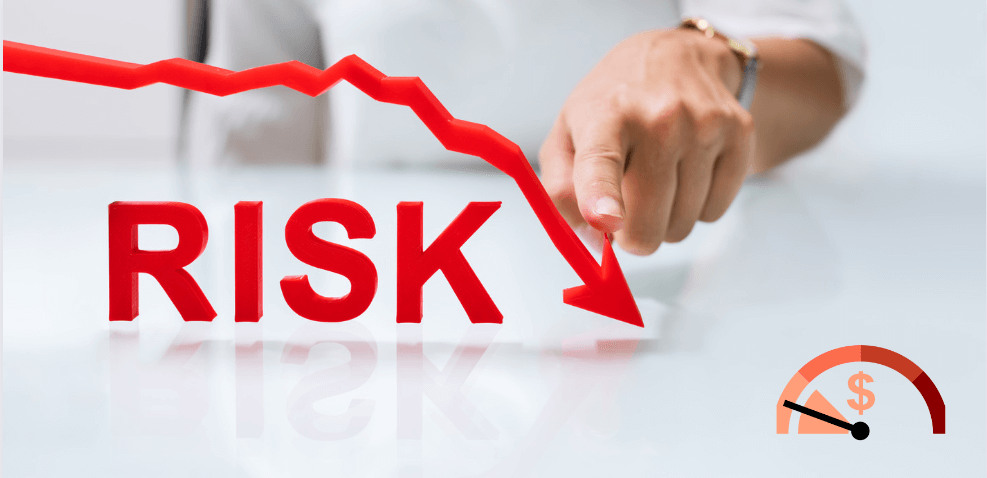Embarking on a journey towards financial growth and security involves navigating the intricate landscape of investments. In a world teeming with possibilities, the allure of low risk-high yield investments stands as a beacon for those seeking a prudent approach to wealth accumulation. This blog post serves as your compass, guiding you through the realms of financial prosperity where stability and lucrative returns coalesce. Discover the art of astute investing as we delve into strategies that prioritize safety without compromising on potential gains. Whether you’re a seasoned investor or someone just stepping into the financial arena, our insights will illuminate the pathways to success.
Uncover the secrets of intelligent investment decisions, where calculated risks lead to substantial rewards. Join us on this exploration of low risk-high yield investments – a journey where financial resilience meets the promise of significant returns. Your pursuit of a secure and prosperous financial future begins.
Understanding Low risk-high yield investments
What are Low risk-high yield investments?
Low risk-high yield investments are financial instruments that prioritize capital preservation while aiming for returns that outperform traditional, lower-yield options. These investments strike a delicate balance, providing investors with an opportunity to grow their wealth without exposing themselves to significant market volatility.
Types of Low risk-high yield investments
High-Yield Savings Accounts:
Overview: These accounts offer a higher interest rate than standard savings accounts while maintaining the security of a traditional savings approach.
Benefits: Capital preservation, competitive interest rates, and ease of access to funds.
Certificates of Deposit (CDs):
Overview: CDs are time deposits with fixed interest rates and maturity dates, offering a secure way to grow your money.
Benefits: Guaranteed returns, low risk, and flexibility in choosing the CD term.
Dividend-Paying Stocks:
Overview: Investing in stocks with a history of consistent dividend payouts provides a source of regular income.
Benefits: Potential for capital appreciation and a steady income stream.
Real Estate Crowdfunding:
Overview: Investors pool funds to participate in real estate projects, providing an avenue for diversification.
Benefits: Access to real estate investments with lower capital requirements.
Treasury Securities:
Overview: Backed by the U.S. government, Treasury securities like T-Bills offer a safe and predictable way to invest.
Benefits: Minimal risk to the principal, fixed interest payments.
Strategies for Success
How to Evaluate and Choose Low risk-high yield investments?
Risk Assessment:
Assess your risk tolerance to ensure the chosen investment aligns with your financial goals.
Diversification:
Spread investments across different assets to mitigate risk and optimize returns.
Research and Due Diligence:
Thoroughly research each investment option to understand its historical performance and potential risks.
Maximizing Returns While Minimizing Risk
Tips for Optimal Performance
Stay Informed:
Keep abreast of market trends, economic indicators, and any changes that may impact your investments.
Regularly Reassess Your Portfolio:
Periodically review your investments to ensure they align with your financial goals and adjust your portfolio accordingly.
Consider Professional Advice:
Consult with financial advisors to receive personalized guidance based on your unique financial situation and goals.
In the dynamic world of finance, investors come in various shapes and sizes, each with a unique risk tolerance, financial goals, and preferences. When it comes to low risk-high yield investments, a diverse spectrum of investors engages in these opportunities. Let’s explore the types of investors commonly found in the realm of low risk-high yield investments.
1.Conservative Investors
Characteristics:
Risk Aversion: Conservative investors prioritize the preservation of capital and are wary of significant market fluctuations.
Steady Income: They seek investments that provide a stable and predictable income stream.
Preferred Investments:
Rationale:
Conservative investors favor low-risk options to ensure the safety of their principal while aiming for steady returns.
2.Retirees and Income-Seeking Individuals
Characteristics:
Income Dependency: Retirees and income-seeking individuals often rely on investment income to sustain their lifestyles.
Capital Preservation: While seeking income, they are also focused on preserving their capital.
Preferred Investments:
Real estate investment trusts (REITs)
Stable bonds
Rationale:
Retirees and income seekers prioritize investments that provide a reliable income stream without exposing them to excessive risk.
3.Young Investors with a Long-Term View
Characteristics:
Risk Tolerance: Young investors typically have a higher risk tolerance due to their longer investment horizon.
Wealth Accumulation: They are focused on growing their wealth over the long term.
Preferred Investments:
Real estate crowdfunding for diversification
Balanced portfolios with a mix of low-risk assets
Rationale:
Young investors capitalize on their extended time horizon to tolerate more risk, aiming for substantial growth over the years.
4. Pre-Retirees Planning for Income Streams
Characteristics:
Transitioning to Retirement: Individuals nearing retirement often start transitioning towards income-generating investments.
Balancing Risk: While seeking income, they aim to balance risk to protect their wealth.
Preferred Investments:
Annuities for guaranteed income
Dividend-focused portfolios
Conservative real estate investments
Rationale:
Pre-retirees strategically shift towards investments that offer income streams while managing risk to safeguard their financial security in retirement.
5.Institutional Investors and Funds
Characteristics:
Professional Management: Institutional investors and funds are managed by professionals with expertise in navigating financial markets.
Diverse Portfolios: They often have diverse portfolios to spread risk and enhance returns.
Preferred Investments:
Hedge funds with low-risk strategies
Low-volatility exchange-traded funds (ETFs)
Stable fixed-income instruments
Rationale:
Institutional investors prioritize sophisticated strategies and diversified portfolios to achieve low-risk, high-yield outcomes for their stakeholders.
6. Income-Focused Entrepreneurs and Business Owners
Characteristics:
Financial Independence: Entrepreneurs and business owners seek financial independence and diversification outside their businesses.
Interest in Passive Income: They are interested in generating passive income to supplement their business earnings.
Preferred Investments:
Commercial real estate for rental income
High-dividend stocks
Private lending opportunities
Rationale:
Entrepreneurs leverage low risk-high yield investments to create passive income streams, contributing to their financial independence.
7.Risk-Averse Individuals with Moderate Returns Expectations by low risk–high yield investments
Characteristics:
Balanced Approach: These investors seek a balance between risk mitigation and returns.
Long-Term Goals: While risk-averse, they recognize the need for returns to achieve long-term financial goals.
Preferred Investments:
Stable dividend-paying stocks
Government bonds
Conservative mutual funds
Rationale:
Balancing risk and returns, these investors opt for low-risk options that still offer modest growth potential.
8.Global Investors Seeking Stability
Characteristics:
International Diversification: Investors seeking stability often diversify globally to mitigate risks associated with a specific market or economy.
Currency Considerations: They may consider currencies and geopolitical factors when making investment decisions.
Preferred Investments:
Blue-chip multinational stocks
Stable foreign real estate investments
Rationale:
Global investors prioritize stability by diversifying across countries and regions, aiming to reduce exposure to regional economic uncertainties.
Navigating the realm of low risk-high yield investments requires a blend of knowledge, strategic planning, and a commitment to staying informed. By incorporating these investments into your financial strategy, you can potentially enjoy steady returns while safeguarding your capital. Remember, each investor’s journey is unique, and seeking professional advice ensures your choices align with your specific financial goals. As you embark on this financial exploration, let the principles of low risk-high yield investments guide you towards a secure and prosperous future.
Thanks for reading from Adhunu
Check out our other blogs
Quick Wins: Your Guide to Short-Term Savings Success
Swift Profits: Exploring Short-Term Investments Examples
Safeguarding Your Wealth: The Art of Risk-Free Investments
FAQ
A1: While these investments offer a balanced approach, suitability depends on individual financial goals and risk tolerance. Consult with a financial advisor for personalized advice.
A2: While no investment is entirely risk-free, low-risk, high-yield options aim to minimize risk while providing competitive returns. Diversification and thorough research are key.
A3: Regular portfolio reviews, at least annually, help ensure your investments align with your goals and adjust for any changes in your financial situation.
A4: Reputable crowdfunding platforms implement security measures, but risks exist. Research platforms thoroughly, diversify investments, and understand the associated terms.
A5: Suitability depends on your individual financial goals and risk tolerance. Conduct a thorough self-assessment to understand your comfort level with risk. Consulting with a financial advisor can provide personalized guidance, ensuring your chosen investments align with your unique circumstances and objectives.




